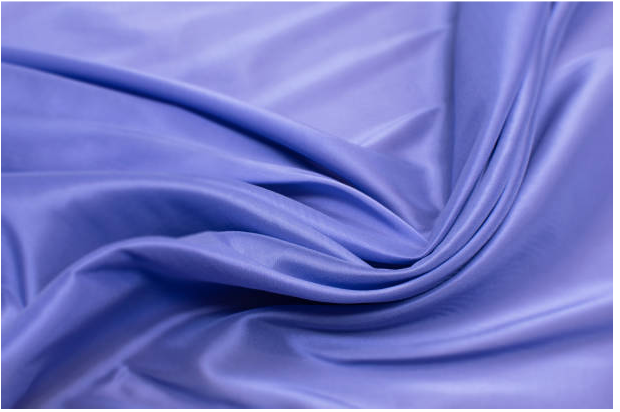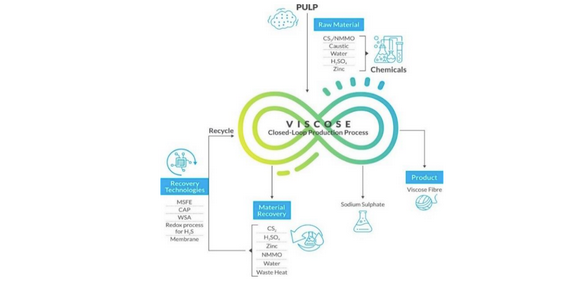Rayon Fabric in Fashion: Balancing Style With Sustainability

Balancing style with sustainability, rayon fabric has emerged as a significant player in the fashion industry. Known for its silky texture and versatility, it's earned a place in a diverse range of clothing lines.
But its appeal isn't just skin-deep; rayon's production process utilizes environmentally friendly techniques and renewable resources, positioning it as a poster child for sustainable fashion.
However, it's not without controversy – the production of certain types of rayon, particularly viscose, raises significant environmental and health concerns.
Keep reading as we unravel the intriguing world of rayon, its impact on fashion, and the challenges it faces.
Rayon's Luxurious Appeal

Despite its contentious production process, the appeal of rayon in the fashion industry lies in its luxurious feel and remarkable comfort.
But what is rayon exactly? Rayon is man-made fabric, often compared to silk for its smooth and glossy texture. It offers a cool-to-the-touch sensation that many find irresistible. It's also known for its gentle, graceful drape, adding a touch of elegance to garments.
What sets rayon apart from other luxury fabrics is its affordability. It manages to imitate the feel of high-end materials without the steep price tag, making it a popular choice for fashion-conscious individuals on a budget.
Rayon's comfort factor shouldn't be underestimated, either. The fabric is lightweight and breathable, making it a great option for warm climate clothing. It also boasts excellent moisture absorption properties, enhancing airflow and keeping the wearer cool and dry.
Whether it's a simple t-shirt or a more structured piece like a blazer, rayon adds a level of comfort that few other fabrics can match.
Fashion Applications of Rayon

Rayon's versatility shines in its wide-ranging applications in the fashion industry. This fabric's luxuriously soft, silk-like texture, coupled with its ability to mimic high-end materials, makes it a preferred choice among fashion designers. From everyday wear to couture creations, rayon's presence is unmistakable.
One key feature of rayon is its adaptability. It's seen in casual attire such as t-shirts and blouses, and in tailored pieces like suits and blazers. The fabric's smooth, cool feel and gentle drape enhance the wearing experience, delivering both comfort and elegance.
Moreover, rayon's ability to beautifully accept dyes and prints contributes to its popularity. This characteristic allows designers to create vibrant, colorful pieces that stand out in fashion collections.
With its use of renewable resources, choosing rayon aligns with responsible production and consumption in the fashion industry.
Comparing Rayon With Other Fabrics
Rayon's comparison with other fabrics can be broken down into three key areas:
- Texture and Feel: Rayon offers a softer, smoother touch akin to silk, providing a luxurious feeling without the high cost.
- Breathability and Comfort: Rayon is highly breathable, similar to cotton. Its ability to wick moisture away from the skin makes it comfortable for wear in different seasons.
- Sustainability: Unlike synthetic fibers such as polyester, rayon is made from renewable sources and is biodegradable. This helps reduce the environmental impact associated with fabric production.
In essence, rayon offers a balance of luxury, comfort, and sustainability. It's a fabric that not only feels good on the skin but also aligns with the increasing demand for eco-friendly fashion.
Eco-Friendly Aspects of Rayon Fabric
The production process of rayon is rooted in the use of renewable resources, primarily wood pulp, which makes it inherently sustainable.
However, the eco-friendly aspects of rayon extend beyond just its base materials. The fabric is biodegradable, meaning it naturally decomposes over time, reducing its environmental footprint. This is a significant advantage over synthetic fabrics like polyester, which can take hundreds of years to break down.
Moreover, advances in technology have led to the development of a closed-loop production process for making rayon. This means that the chemicals used in production are almost entirely recaptured and reused, minimizing waste and environmental impact.

Rayon's eco-friendly aspects can be summarized as follows:
- Use of renewable resources in production, reducing reliance on fossil fuels.
- Biodegradability, ensuring the fabric doesn't contribute to long-term waste.
- Closed-loop production, minimizing waste and chemical pollution.
The Dark Side of Rayon Production
Despite its luxurious feel and sustainability claims, rayon production harbors a darker side, marked by significant environmental damage and harmful health implications.
Environmental Damage
Rayon manufacturing is a chemically intensive process, often involving such harmful substances as carbon disulfide, sulfuric acid, and ammonia. These chemicals can contaminate local waterways, leading to severe ecological disruption.
Additionally, the production of rayon contributes to deforestation, as it frequently relies on the wood pulp from ancient and endangered forests.
Health Risks
The toxic chemicals used in rayon production not only harm the environment but also pose serious risks to human health.
Workers in rayon factories suffer exposure to these substances, leading to an increased risk of conditions like heart disease, stroke, and nerve damage. Furthermore, surrounding communities may also be affected due to water and air pollution.
Waste Generation
Rayon production creates a substantial amount of waste. The chemical-laden waste water, if not properly treated, is often discharged into local rivers and streams, posing further environmental and health hazards.
Therefore, while rayon may be touted for its sustainability and style, it's crucial to recognize the hidden costs associated with its production.
Forest Management for Sustainable Rayon
Forests serve as the primary source for the raw material – wood pulp – needed in rayon production. Consequently, how these forests are managed directly impacts the sustainability of rayon.
- Sustainable Harvesting: This involves cutting trees in a way that promotes the health of the forest, allowing it to regenerate naturally. When done responsibly, harvesting poses minimal impact on the ecosystem, maintaining biodiversity and carbon storage.
- Forest Certification: Independent organizations assess forest management practices against a set of rigorous standards. Only those meeting these benchmarks earn the certification, providing assurance of their sustainable practices.
- Plantation Management: Plantations can be a sustainable source if managed correctly. This includes planting appropriate species, controlling pests without harmful chemicals, and maintaining the health of the soil.
Implementing these practices can ensure a sustainable supply chain for rayon production. This way, fashion can strike a balance between style and environmental responsibility, allowing consumers to enjoy the luxurious feel of rayon without compromising the planet's well-being.
Conclusion
Rayon's unique blend of style, versatility, and eco-consciousness makes it a key player in sustainable fashion. However, its production drawbacks highlight the need for more responsible practices.
The focus is on transforming these challenges into opportunities. Sustainable alternatives to viscose, like lyocell and modal, are gaining popularity.
As the fashion industry seeks to balance style with sustainability, the story of rayon underscores the importance of making conscious fabric choices.
With improved forest management and cleaner production methods, rayon's future may shine even brighter in the world of fashion.